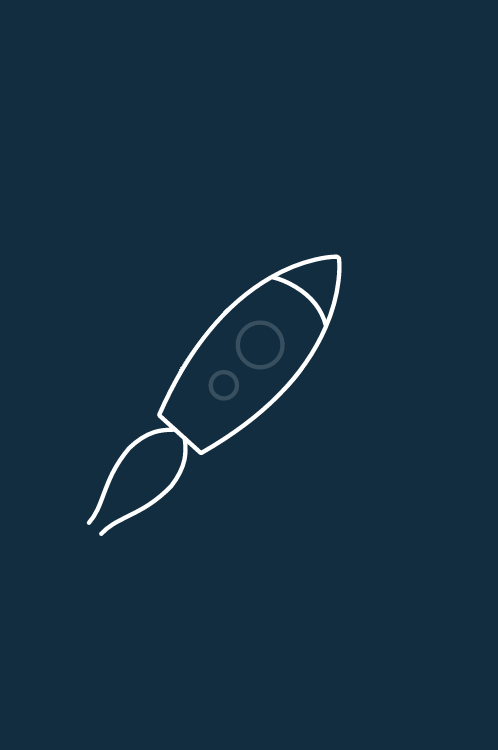Challenges
No clear alternative
Off the shelf software just doesn’t cut it - a total rewrite or custom solution from scratch seems the only option.
Full-stack ‘black hole’
.NET development takes a lot of time, with little to show for it. It’s hard to prove value from the start.
Total cost of ownership
Sure, the runtimes are free, but the burden of ongoing maintenance is heavy and the costs of .NET add up.
The clock is ticking
Modernization is urgent. A full-stack .NET approach just takes too long to reach the finish line. You need a faster approach.

What Servoy can do for you
Fast
Build projects faster and deliver on-time. Create proof-of-concept applications and MVPs that generate value - within weeks.
Use a proven framework
Accelerate your development with our trusted framework. Focus on core functionality from the very start of your project.
Familiar
Get building straightaway. Developers experienced with 4GL feel right at home with Servoy’s intuitive paradigm.
Coded in JS, then reborn
Build fast with JavaScript in Servoy, and our platform will instantly convert your code into the most modern and capable applications. Always updated, always on.
Featured solutions


Thomas Kammerer // ITC Project Leader
With Servoy Mobile, it’s quick and easy for us to develop flexible applications that run on any
Servoy enables DB Services GmbH to quickly create powerful Android applications
Karel Van den Berghe // Globis
After two unsuccessful FileMaker rewrites, we did find the solution
Globis NV is the spin-off of a family-owned company that specializes in processing plastics and producing printed packaging. The company developed an ERP system that has become assets to the
Albert Beerman // Manager of Information Processing
Whether the topic is training, consulting or technical support, the Servoy team fully understands
Founded in 1913, the Piepenbrock family business is headed by the fourth generation of owners. The company offers facility management, commercial cleaning, security, maintenance, machinery and
Oliver Hunziker // Chief Technology Officer
With Servoy, we have a modern, efficient, and sustainable development platform to reliably support
Mirus is the Swiss market leader in back-office solutions for the hotel, catering and tourism industries. Their solutions meet the specific requirements of the hospitality sector for over 2,000
Jon Ruby // Managing Director of Jonar
By vastly accelerating the speed to market, Servoy helped us slash our development costs.
Jonar has been making enterprise resource planning (ERP) software for the Canadian garment and textile industry since 1986. Following a recent change of management, the company reviewed its
Marico van Leeuwe // Managing Director of Stb Zorg
The Servoy tools made it possible for us to develop the extensive Stb Care platform efficiently.
Stb was founded in 1992 by four students who developed tailored CRM systems. Stb has since become a renowned automation company, with over 250 clients and 50 employees.
Robert Cardone // President, ReadQ
A big key for our success was that our legacy developers were able to pick up Servoy quickly
ReadQ Systems, headquartered in New York City, is a technology and service company founded in 1968. Their focus is to help financial institutions reduce operational overhead and succeed in their
Ron Mihavics // Project Manager
Time is money, so we needed a development platform that is fast and easy to use for maximum
Founded in 1933, Rea is now the largest producer of magnet wire in North America and employs more than 1,200 people in its Fort Wayne, Indiana, headquarters; its five plants; and its four joint
Dave Wurms // Owner and Managing Director
If we need help to find a solution for a given customer problem, we just turn to the Servoy team.
Focus Feedback was founded in 2003 by owner and Managing Director Dave Wurms. Based in Tilburg, The Netherlands, Focus Feedback is active in the development, sales, and implementation of customer
Hessel Kuik // CEO of Minox
We can build 80% of what we need through drag and drop, without having to code it. It allowed us to
For more than 30 years, Minox has been a market leader in accountancy software and was one of the first to introduce administrative packages created for the computer. Today, 5,000 companies enjoy the
Jeroen van Es // Commercial Director Distri Data
Servoy combines highly efficient software development with outstanding agility and flexible
Distri Data has provided complete wholesale automation solutions for over 25 years. The Distri Data team comes from the wholesale industry and brings extensive expertise to its customers. Distri Data
Audrey Kauffman // Chief Information Officer
We originally hoped to find an off-the-shelf system to replace Omega, but it soon became clear that
BETA Healthcare Group is the largest insurer of hospital professional liability coverage in California, serving more than 200 hospitals and healthcare facilities.
Security taken care of
You can sleep soundly at night, knowing that technical security is included with Servoy’s hosted cloud. One less thing to worry about.
Help on hand
You might not need it, but whenever and whatever you need to accelerate your project – we’re here. With dedicated Appsurance program support and practical help from the user community.
Latest articles


No Code, Low Code or Rapid Application Development for your software?
23 June 2023
How to turn legacy applications into business value: Why Your Project’s Success Depends on a Champion - Part II
15 December 2022
Join 30k+ developers that stay on top of the latest low code insights!
customer cases
insights and reports
relevant news


 Login
Login

